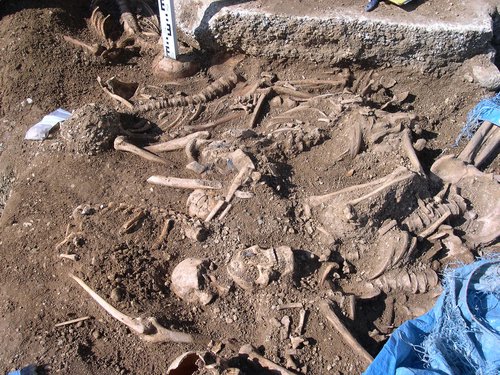A long-awaited family reunion

The skeleton, known as SK1756, is one of at least 35 men and boys discovered in a mass burial site underneath St John’s in 2008 by Thames Valley Archaeological Services during preparations for building Kendrew Quad. Archaeologists believe the men to have been killed during the St Brice’s Day Massacre of 1002, when King Aethelred II ordered the execution of all Danes living in England after hearing of a Danish assassination plot against him. During the massacre Danish families in Oxford broke into St Frideswide’s church looking for sanctuary, and local people burnt the church down.
The skeletons were found to be men mostly aged between 16 and 25, with many of the bones showing signs of extreme violence, having been stabbed several times before they died or suffering other kinds of violent attack, including decapitation. This, along with evidence of older scars on some of the men and chemical analysis showing a diet rich in seafood, has prompted archaeologists to suggest that the men might have been a group of Viking raiders, rather than citizens of Danish origin.
DNA testing has now found that SK1756 is closely related to another male skeleton excavated in 2005 in Denmark, possibly a half-brother, uncle, nephew, grandfather or grandson. He was excavated near the town of Otterup and is thought to be a farmer in his 50s, who was also found to have suffered from a stab wound which may have killed him. This discovery is particularly exciting as it provides evidence of Vikings leaving Denmark and setting in Britain.
With the family ties established, the two skeletons are to be reunited at an exhibition at the National Museum of Denmark in Copenhagen this summer. 'Togtet' in Danish or 'Join the Vikings – on raid' in English opens June 26th, 2021 and will run until 2024.
Image credit: Thames Valley Archaeological Services